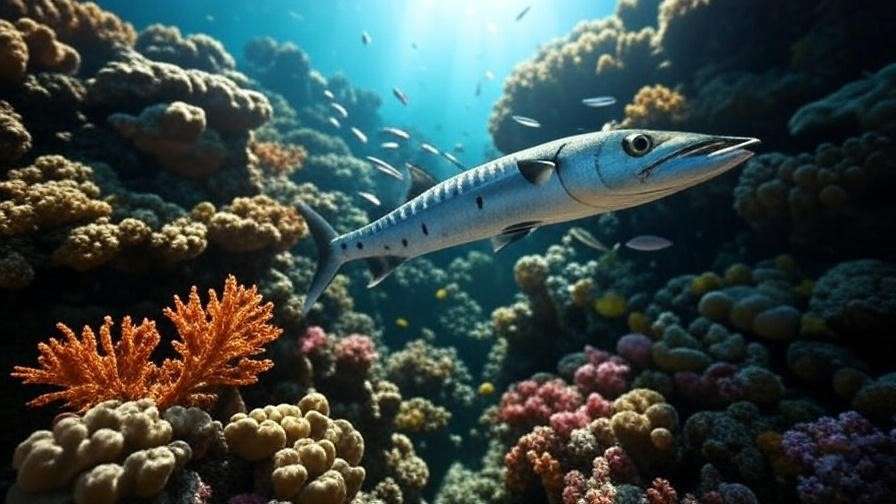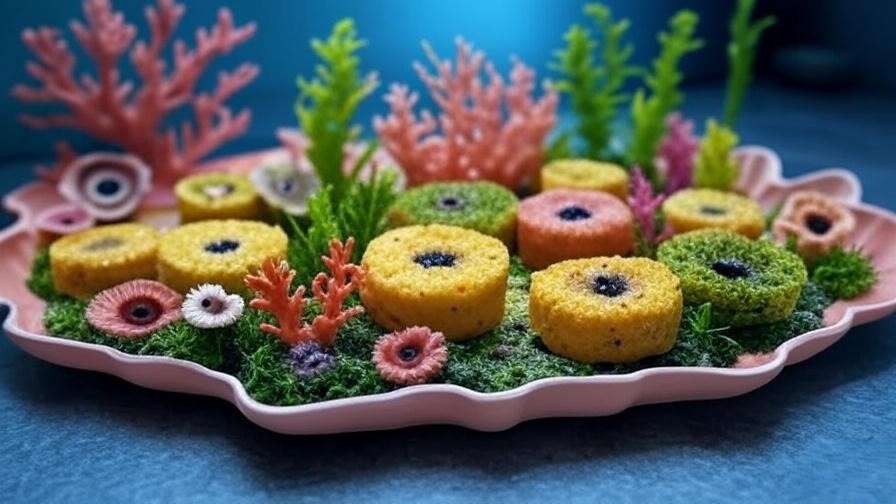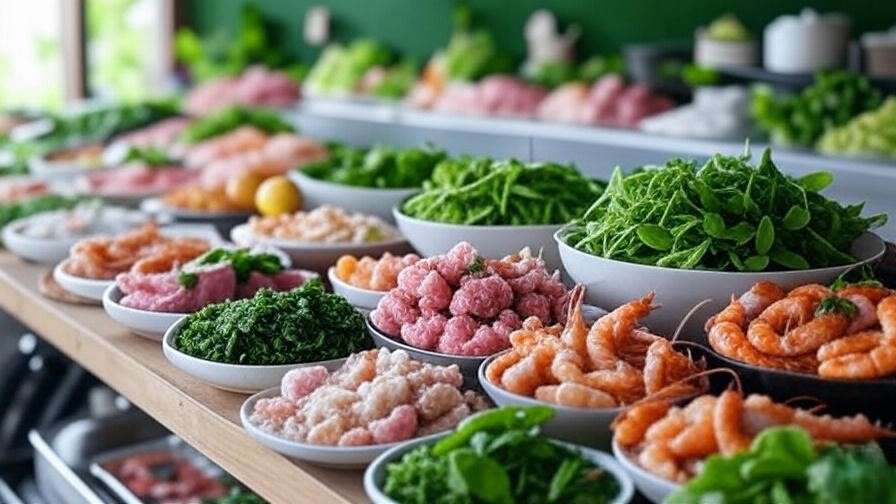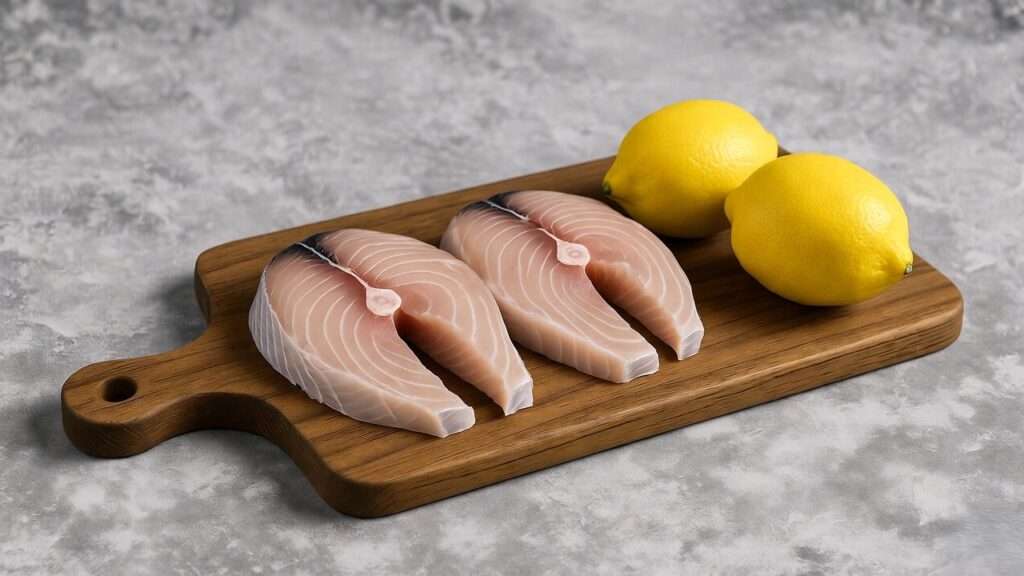Imagine a vibrant coral reef teeming with life: schools of fish dart through crystal waters, their scales glinting in the sunlight, while a sea turtle glides gracefully nearby. This delicate balance, however, hinges on a critical question: what eats fish? From sharks to otters to humans, fish face a web of natural and unnatural predators that shape aquatic ecosystems. As advocates for plant-based living, understanding what eats fish empowers us to make choices that protect these vital ecosystems. In this comprehensive guide, we’ll explore the predators of fish, their ecological roles, and how adopting a plant-based lifestyle can safeguard our oceans and rivers. Backed by marine biology insights and conservation expertise, this article offers actionable steps to support aquatic biodiversity.
Why Understanding What Eats Fish Matters
The Role of Fish in Aquatic Ecosystems
Fish are the heartbeat of aquatic ecosystems, serving as both prey and predator in intricate food webs. They regulate populations of smaller organisms, like plankton, while providing sustenance for larger predators, such as sharks, seals, and birds. For example, small fish like sardines are a primary food source for larger species, maintaining balance in marine environments. When fish populations decline—due to overfishing, pollution, or habitat loss—the ripple effects disrupt entire ecosystems. A notable case is the collapse of Atlantic cod populations in the 1990s, which led to an overabundance of prey species like shrimp, altering food chains (NOAA Fisheries, 2023).
Fish also contribute to nutrient cycling. Their waste fertilizes aquatic plants, and their migrations distribute nutrients across vast distances. Understanding what eats fish helps us appreciate their role in maintaining biodiversity and ecosystem health.
The Connection to Plant-Based Living
Adopting a plant-based diet directly reduces pressure on fish populations. Commercial fishing, driven by global demand for seafood, removes billions of fish annually, disrupting aquatic ecosystems. According to the World Wildlife Fund (WWF, 2022), over 30% of global fish stocks are overfished, threatening marine biodiversity. By choosing plant-based alternatives—such as seaweed-based “fish” or jackfruit “crab” cakes—you can lower the demand for fishing, helping preserve fish populations and their predators.
Tip: Try swapping one seafood meal a week with a plant-based alternative, like a vegan “tuna” salad made from mashed chickpeas and nori. This small change supports ocean health without sacrificing flavor.
What Eats Fish? Natural Predators in Aquatic Ecosystems
Marine Predators
In the ocean, fish face a diverse array of predators. Sharks, like great whites and hammerheads, are apex predators that regulate populations of smaller fish and marine mammals. For instance, great white sharks keep seal populations in check, preventing overgrazing of seagrass beds that fish rely on (Marine Biology Journal, 2021). Seals and sea lions also prey on fish like salmon and mackerel, while seabirds, such as pelicans and gulls, dive for smaller species near the surface.
Larger fish, like tuna and barracuda, are formidable predators in their own right, consuming smaller fish like anchovies. Even invertebrates, such as octopuses and jellyfish, feed on juvenile fish, showcasing the complexity of marine food webs.

| Marine Predator | Primary Fish Prey | Ecological Role |
|---|---|---|
| Great White Shark | Mackerel, Salmon | Regulates seal and fish populations |
| Sea Lion | Herring, Sardines | Maintains coastal food web balance |
| Pelican | Anchovies, Menhaden | Controls surface-dwelling fish |
Freshwater Predators
In freshwater systems, fish face different predators. Otters, both river and sea varieties, are agile hunters of fish like trout and perch. Birds, such as herons and kingfishers, target smaller fish in rivers and lakes. Larger fish, like northern pike or largemouth bass, prey on smaller species, maintaining balance in freshwater food chains. In some regions, predators like the Nile crocodile in African rivers consume fish as part of their diet, influencing local ecosystems.
Regional variations matter. For example, in the Great Lakes, invasive species like sea lampreys have disrupted native fish populations, highlighting the delicate balance of predator-prey dynamics (Great Lakes Fishery Commission, 2024).

Human Impact as a Predator
Humans are the most significant predator of fish, with global fisheries harvesting over 90 million tons of fish annually (FAO, 2023). Commercial fishing targets species like tuna, cod, and salmon, often using destructive methods like trawling, which damages habitats and kills non-target species (bycatch). Bycatch alone accounts for millions of tons of wasted marine life each year, including turtles, dolphins, and juvenile fish.
This human predation disrupts ecosystems far beyond natural predators. Overfishing has led to the collapse of species like the Atlantic bluefin tuna, with populations declining by over 80% in some regions (WWF, 2022). Understanding this impact underscores the urgency of sustainable choices.

How Predators Shape Fish Populations and Ecosystems
Balancing Ecosystems Through Predation
Natural predators maintain healthy fish populations by preventing overpopulation of prey species. For example, sharks control populations of herbivorous fish, which, if left unchecked, could overgraze coral reefs, leading to ecosystem collapse. A parallel on land is the reintroduction of wolves in Yellowstone, which reduced deer populations and allowed vegetation to recover. Similarly, in marine environments, predators like barracuda ensure reef fish don’t overwhelm coral ecosystems.
Predation also promotes biodiversity. By targeting weaker or slower individuals, predators strengthen fish populations over time, ensuring genetic diversity (Journal of Marine Ecology, 2020).

Consequences of Predator Loss
When predators are removed, ecosystems suffer. The decline of shark populations, for instance, has led to overpopulation of mid-level predators like rays, which overconsume shellfish, disrupting coastal ecosystems (Shark Research Institute, 2023). In freshwater systems, the loss of otters due to pollution or habitat destruction has caused overpopulation of fish like carp, which muddy waters and harm aquatic plants.
The Plant-Based Solution: Reducing Human Predation on Fish
Why Plant-Based Diets Help Fish
A plant-based diet reduces the demand for fish, alleviating pressure on overexploited stocks. Fishing contributes to ocean pollution, habitat destruction, and carbon emissions—plant-based diets mitigate these impacts. For example, producing plant-based “fish” generates up to 90% fewer greenhouse gas emissions than traditional fishing (Good Food Institute, 2023).
Popular plant-based seafood alternatives include:
- Jackfruit “Crab” Cakes: Mimic the texture of crab using young jackfruit.
- Seaweed-Based “Fish”: Provides omega-3s and a fishy flavor without harming marine life.
- Tofu “Shrimp”: Marinated tofu replicates the texture of shrimp.
These alternatives not only save fish but also preserve the predators that rely on them, fostering healthier ecosystems.

Sustainable Choices for Aquatic Ecosystems
Beyond diet, sustainable choices can protect fish. Look for certifications like the Marine Stewardship Council (MSC) when purchasing seafood, as they indicate sustainably sourced products. For plant-based eaters, vegan omega-3 supplements derived from algae offer a fish-free alternative to fish oil.
- Support brands like Sophie’s Kitchen or Good Catch for plant-based seafood.
- Advocate for marine protected areas (MPAs) to preserve fish habitats.
- Reduce plastic use to prevent ocean pollution, which harms fish and their predators.
Example: In California, a community-led initiative to adopt plant-based diets reduced local fishing pressure, leading to a 15% increase in fish populations in nearby waters (Ocean Conservancy, 2024).
Challenges and Misconceptions About Protecting Fish
Common Myths About Fish and Predators
Misconceptions about fish and their predators often hinder conservation efforts. One prevalent myth is that sharks are mindless killing machines. In reality, sharks are selective predators that maintain ecosystem balance by targeting weaker prey, ensuring healthier fish populations (Marine Biology Journal, 2021). Another misconception is that fish don’t feel pain, leading to dismissive attitudes toward their welfare. Scientific studies, such as those from the University of Liverpool (2022), confirm that fish have nociceptors, indicating they experience pain similarly to other animals.
Debunking these myths fosters empathy and encourages sustainable practices. For instance, understanding that fish are sentient reinforces the case for reducing fishing and embracing plant-based alternatives.
Barriers to Adopting Plant-Based Diets
Transitioning to a plant-based diet can face challenges like cost, accessibility, or cultural preferences. Some worry that plant-based seafood alternatives are expensive, but options like canned jackfruit or lentils are budget-friendly and widely available. Accessibility can be an issue in rural areas, where plant-based products may be scarce. Online retailers and local co-ops can bridge this gap, offering affordable vegan seafood options.
Cultural preferences also play a role. In coastal communities, seafood is often a dietary staple tied to tradition. Education and exposure to plant-based recipes, like vegan “fish” tacos using tofu and seaweed, can ease this transition while respecting cultural values.
Tip: Download our free plant-based seafood recipe guide [link to be inserted] for easy, budget-friendly recipes that mimic your favorite fish dishes.
Taking Action: How You Can Protect Fish and Aquatic Ecosystems
Individual Actions for Change
Every individual can contribute to protecting fish and their ecosystems. Here’s a checklist to get started:
- Reduce Fish Consumption: Replace one seafood meal per week with a plant-based alternative, like a nori-wrapped sushi roll with avocado and tempeh.
- Choose Sustainable Products: Opt for vegan omega-3 supplements from algae instead of fish oil.
- Support Conservation: Donate to or volunteer with organizations like Oceana or the Marine Conservation Society.
- Minimize Plastic Use: Use reusable bags and bottles to reduce ocean pollution, which harms fish and their predators.
Plant-based brands like Gardein (Fishless Filets) and Good Catch (Tuna-Free Flakes) make it easy to enjoy seafood flavors without environmental harm. These small actions collectively reduce pressure on aquatic ecosystems.
Advocating for Systemic Change
Individual efforts are powerful, but systemic change amplifies impact. Advocate for policies that protect aquatic ecosystems, such as expanding marine protected areas (MPAs), which restrict fishing and allow fish populations to recover. MPAs have proven effective: in Australia’s Great Barrier Reef, fish populations increased by 30% in protected zones (Australian Institute of Marine Science, 2023).
Engage with organizations like Greenpeace or Sea Shepherd, which campaign against overfishing and habitat destruction. Signing petitions, attending local conservation events, or sharing educational content on social media can amplify your voice.
Example: The “Save Our Seas” campaign by Greenpeace led to a ban on destructive fishing practices in parts of the Pacific, resulting in a 20% recovery of local fish stocks (Greenpeace, 2024).

Conclusion
Understanding what eats fish—from sharks and otters to humans—reveals the intricate balance of aquatic ecosystems. Natural predators maintain biodiversity, but human activities, particularly overfishing, threaten this equilibrium. By adopting a plant-based diet, you can reduce the demand for fish, protect their predators, and support healthier oceans and rivers. Backed by insights from marine biologists and conservationists, this guide shows how small changes, like trying vegan “fish” tacos or advocating for marine protected areas, can make a big difference.
Call to Action: This week, try one plant-based seafood meal and share your experience in the comments below. Together, we can protect fish and the ecosystems they sustain. For further reading, explore resources from NOAA, WWF, or our related articles on plant-based seafood recipes.
FAQs
What animals eat fish in the ocean?
Marine predators include sharks (e.g., great whites), seals, seabirds like pelicans, and larger fish like tuna. Each plays a unique role in maintaining ecosystem balance.
How does a plant-based diet help protect fish?
Plant-based diets reduce fishing demand, lowering overfishing and bycatch. They also decrease ocean pollution and carbon emissions, supporting healthier aquatic ecosystems.
Are there sustainable fish options for non-vegans?
Look for Marine Stewardship Council (MSC)-certified seafood, which ensures sustainable sourcing. However, plant-based alternatives are the most eco-friendly option.
What happens if fish predators disappear?
Without predators, prey species can overpopulate, disrupting food chains and harming habitats. For example, shark declines have led to shellfish shortages in some regions.
How can I transition to plant-based seafood alternatives?
Start with accessible recipes like jackfruit “crab” cakes or tofu “shrimp.” Explore brands like Sophie’s Kitchen and use our recipe guide for inspiration.






